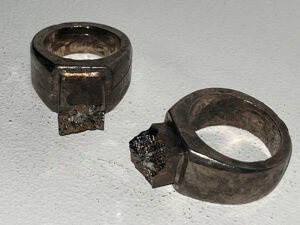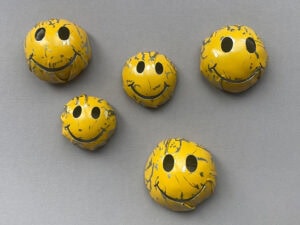
Looking Closely
Since I constantly experiment with new materials and techniques, the set of tools I employ varies significantly from idea to idea, object to object. Given that for every new process I either acquire an already traditionally associated tool, sometimes alter it, or devise and make a totally new type of tool, I am never fully satisfied with any of them. This makes it difficult to choose one that has the most impact on my work. However, there is a particular device that stands out in my mind, because it neither fits within a traditional definition of a tool – an extension of the hand – nor does it help me manipulate a particular material. What it does allow me do is shift my perspective, my vision and my focus. It is a device for the extension of the sense of sight: a precision industrial inspection stereomicroscope.
A microscope is not a tool, but an instrument and it is an instrument that came to industrial use from the world of science. Historically, the microscope was to reveal something that lay just beyond what could be seen with an unaided eye. Its stereo mechanism was designed to mimic and enhance the mechanics of the geometry of our vision. In physics, it brought to light the components of matter, in biology and medicine, the components of living organisms. The microscope enabled miraculous feats of observation and became the connector, a mediator between the levels of existence: the very tangible and its underlying nature. The presence of such devices not only stood for a stamp of methodical scientific inquiry, but also the incidence of the imagination, the creative drive to search for the essence of the physical world.
This capacity to break down the total into its components and details and at the same time reveal something unexpected is what I love about using this device. Just like a viewfinder on a camera, the microscope enables me to shift perspectives and to frame my focus on a very specific area of the object or a material. While most of the time this has a very practical aim – to fit things more precisely (that’s actually what originally drew me to metalsmithing) – I find that it also allows me to shift my physical presence to a different level. As I look through the scope, right away the movements of my hands slow down, the heart rate and breathing follow and become more precise and efficient. Every little tick of the finger now corresponds to something gargantuan. And the hand tool I just used for a different operation without the scope no longer seems to be that perfect for the job, looks bulky and clumsy next to the parts that need to be merged. And yes, in that case I make more tools that allow me to accomplish the task. Also under the microscope, of course.
So while I now mostly use the microscope only when I need to work out something very tiny, I still keep looking thorough it when I space out, as if into another dimension – and also when I need to feel that there is still something out there that I missed, or is yet to be revealed.
Sergey Jivetin is a past recipient of the AJF Emerging Artists Award and the Herbert Hoffman Preis. He is a graduate from SUNY New Paltz and the Parsons School of Design. He was born in Uzbekistan and now lives in the United States.





